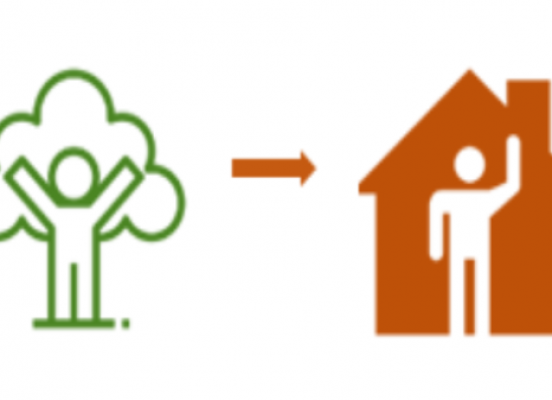Indoor Air Pollution
How do we spend our day? In an open-air or closed environment?
Let’s think of our routine in the current lifestyle, especially in the urban context. In the morning, we go to an air-conditioned gymnasium for exercise; we sit in a closed room at the office or school. In the new normal since COVID19, we are mostly home. Now television, mobile, and various electronic gadgets help us be entertained at home, so there is no need to go out for fresh air. We don’t need natural light, as we have artificial light. We go to an air-conditioned mall or Cinema Hall for entertainment. Is this closed atmosphere is safe for us?
We love our home and keep it clean; we spray chemical insecticides to get rid of insects. We keep our living spaces and our workplaces very clean. How can the air we breathe be free of pollutants, and what are the chances that we are safe?
Humans originated from nature but left nature behind. Today, they feel secure and safe in enclosed spaces.
Scientists say that indoor air is five times more harmful than outdoor air. During the covid19 lockdowns, the government had recommended that citizens not use air-conditioners at home, even though it was the peak of summer. They asked us to let the natural air circulate and to ventilate our homes regularly. Living in unventilated spaces can increase depression, dizziness, headache, allergies, bronchitis, and sleep disorders, leading to unhealthy conditions.
What is Air pollution?
Air Pollution is any gas, dust particles, fumes, smoke, and an odor that make the air harmful to living things. We are aware of outdoor air pollution due to emissions from Industries, vehicles, burning of waste/plastic in the open air, etc. Now, more than ever, it is necessary to think, are we pollution-free in our own homes?
How can we define indoor pollution in the so-called clean places where we work and live?
Indoor air pollution is indoor air quality (IAQ: Air quality within and around buildings and structures), especially as it relates to the health and comfort of building occupants;
- Indoor Air pollution (IAP): When IAQ is not suitable for breathing
Indoor air pollution is pollution in Indoor areas such as urban and rural houses, workplaces, malls, airports, Institutions, temples, etc.
Impact of Indoor Pollution Globally:
As per WHO data
Deaths due to Smoke from Solid fuel
Health Impact:
Health Impact of Indoor air pollution is cough, throat infections, sneezing, eye irritation, heart disease, respiratory diseases, fatigue, dizziness, headache, and oxygen level reduction. An increase in the number of cancer patients may also be due to bad indoor air quality.
Particulate matter 2.5 is a significant source of pollution, and most particles that can adversely affect our health fall under this category. These particles have diameters that are at least 2.5 microns or smaller and include smoke and haze.
Regardless of the size, particulate matter can damage both your lungs and heart. This damage can lead to health problems such as Heart disease, chronic lung diseases, Heart attacks, Irregular heartbeat, aggravated asthma, decreased lung function, blood clots, and other changes to blood chemistry. It can also cause premature death, lung irritation, leading to increased lung tissue permeability, increased susceptibility to viral and bacterial infections, increased respiratory symptoms, including irritated airways, coughing, or difficulty breathing
Various Sources of Indoor Air Pollution in our day to day routine:
| Pollutant | Sources |
| VOCs (Volatile Organic Compounds) | Perfumes, furniture polish, Carpet dyes, Adhesives, Paints, Dry cleaned clothes, moth repellents, Air fresheners, automotive products |
| CO (Carbon Monoxide), CO2 (Carbon Dioxide), NO2 (Nitrogen Dioxide) | Improperly operating gas/water heater, wood stove, unvented kerosene heater |
| RPM 2.5 (Respirable Suspended Particulate Matter) | Woodstove, dusting, Unvented gas heater, Tobacco products, burning of any material (agarbatti/ dhoop/mosquito coil, etc.), unvented kerosene heater, animals, birds, Pillows, Bedding, house dust, damp materials |
| Mould/ bacteria | Excessive humidity, irregular cleaning, or damp places |
Steps to Improve Indoor Air pollution:
It is necessary to understand some Do’s and Don’ts to avoid Indoor Air Pollution:
Through Shashwat Eco Solution Foundation, an NGO from Pune under Cummins India’s CSR project, we studied and measured pollution levels at 25 sample houses in urban middle-class apartments and slum pockets. The result supported many findings mentioned above. The government emphasizes many such measures to reduce the impact of air pollution of COVID 19. Application of improvement of Indoor air quality is of utmost need.
So let us commit ourself to not only a healthy life for our family but also the future generation, friends, and colleagues by adopting the following practices:
- Not to burn waste,
- Optimal use of synthetic/chemical cleaners
- Properly ventilate our homes
- Proper maintenance of the air conditioning system
- Ensure plantations wherever possible, like on terrace, rooftop, gardens, and at offices, etc.
- Maintain a proper level of temperature and humidity
Written by: Mrs. Pradnya Thakur

